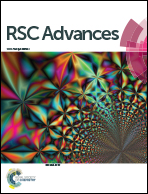High-poly-aluminum chloride sulfate coagulants and their coagulation performances for removal of humic acid
Abstract
High-poly-aluminum chloride sulfate (HPACS) coagulants with different [SO42−]/[Al3+] molar ratio (S) were prepared and proved to have high coagulation efficiency for the removal of humic acid and strong stability for storage and application. The results showed that the higher the SO42− addition, the bigger the aluminum polymerization particles and the more the polymerization Alc existed in the prepared HPACS coagulants. The HPACS exhibited higher coagulation efficiency, a better aging stability and stronger resistance to the change of pH and Ca2+ concentration of raw water than the polyaluminum chloride (PAC) and poly-aluminum chloride sulfate (PACS) reported before. The Sips adsorption neutralization model was established to illustrate the relationship between coagulant dosage and zeta potential of the water system. The adsorption neutralization capacity was proved to be HPACS (S = 0) > HPACS (S = 0.02) > HPACS (S = 0.06) > HPACS (S = 0.10), which was not completely consistent with the coagulation effect of HPACS with different S values and indicated that in addition to adsorption neutralization, actions like bridge-aggregation, precipitation, and sweep-flocculation also played an important role during HPACS coagulation. Moreover, the negative Gibbs free energy indicated that the coagulant adsorption neutralization reaction was a spontaneous process.



 Please wait while we load your content...
Please wait while we load your content...